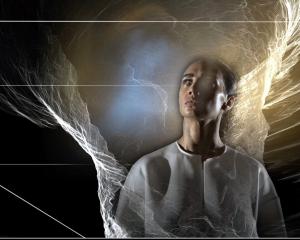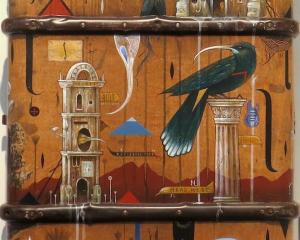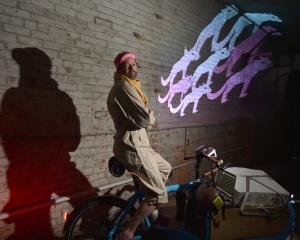Joanne Campbell reviews the latest works by Ben Cauchi, Christine Hellyar and Sue Marshall, and fashion photography from Otago Polytechnic Design and Fine Art Students.
"Borderland", at Brett McDowell Gallery, marks a move into new territory for last year's Frances Hodgkins fellow, Ben Cauchi.
The untitled works that make up the Borderland series feel like pieces of a puzzle that one is compelled to try to fit together. He creates the space or setting for a range of possible narratives. As in all of Cauchi's impressive body of work, a sense of history and the symbolic power of objects are evoked.
The ambrotype remains at the heart of his process but the production of lightjet prints allows him to work on a larger scale than is practical using solely the ambrotype method.
The edges retain the telltale signs of the parent ambrotype, particularly in the absence of image where the emulsion has not reached part of the plate or where it has been held by the photographer.
Cauchi has decided not to sell the ambrotypes from which lightjet prints are made. One complete series of eight lightjet prints is available. The artist plans to keep two other sets; leaving five copies of each individual work available for sale.
Despite the magnification, the images retain their clarity.
• The history of collecting and the display of material culture has been a major focus for Christine Hellyar since the 1970s.
In particular she has focused on the items collected and recorded on Captain Cook's three voyages to the Pacific in the 18th-century.
She has examined objects in important Cook collections around the world and has read the journals of people on board the voyages. These signifiers and descriptions of the experience of first contact have sparked numerous installations - currently displayed at the Dunedin Public Art Gallery.
In "Fishing", long strands of different fibres have been plaited, coiled and arranged in an ordered manner, reminiscent of the objects classified and displayed in museum collections. Together they form the outline of a giant fish.
While there is a sense of order, Hellyar leaves long ribbons hanging down, which give a sense of its potential to unravel.
Blue, red and white dominate the work, perhaps in reference to our national flag.
The fish itself is a potent symbol evoking the Maori tale of maui fishing the North Island out of the sea; as well as raising issues connected with the Treaty of Waitangi, fisheries settlements and ongoing foreshore and seabed disputes.
Perhaps these long strands also refer to history itself and the ties that bind us together as a nation.
• The Blue Oyster is playing host to an exhibition of interest to fans of photography and fashion.
Otago Polytechnic photography and design students recently had the opportunity to work with German fashion photographer Ute Mahler, who visited Dunedin in conjunction with the exhibition "Zeitgeist Becomes Form", currently on display at Dunedin Public Art Gallery.
The fruits of their collaborative efforts are striking.
The pattern and form of designer Mason Tutbury's dress is beautifully conveyed in a photograph by Emily Hlavac-Green and Julia Johnstone.
The pair photographed model Ella Buchanan floating on the surface of a pool. The garment echoes the flow of the water around the body, almost merging into the blue of the water.
The outstretched arm of the model draws the eye further up into the photograph to appreciate the reflections on the surface.
It is an exquisite work among many fascinating images that, at their best, celebrate the talents of all involved.
• In "Down the Gurgler", also showing at the Blue Oyster, Dunedin artist Sue Marshall explores the ritual of shaving.
Three soundtracks compete for the viewer's attention.
Two come from videos in which two men explain in considerable detail their shaving processes and eventually perform the act for the camera. Their eyes are rarely in evidence as the focus is squarely on the jaw - the locus of the act.
Fragments of text encircle the gallery encouraging the viewer to question notions of masculinity. The remaining soundtrack emanates from a black cubicle.
The viewer is drawn into a shower-like space in which a projection on the floor shows water and hair continually going down the drain.
Shaving is on the one hand a revelatory process but it is also a sign of social conformity.
Marshall's treatment of this common yet usually hidden act encourages examination of our self-perception.












